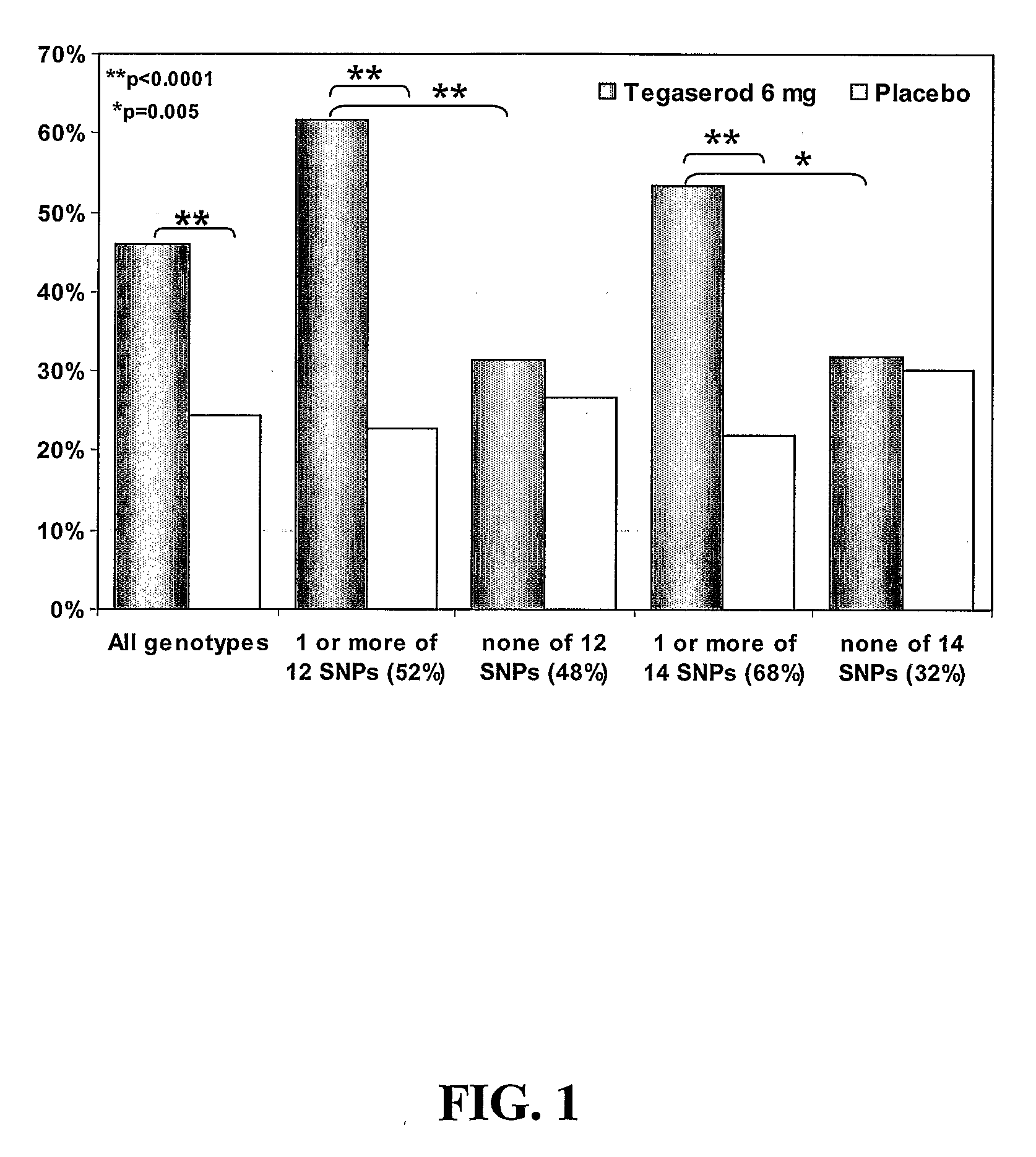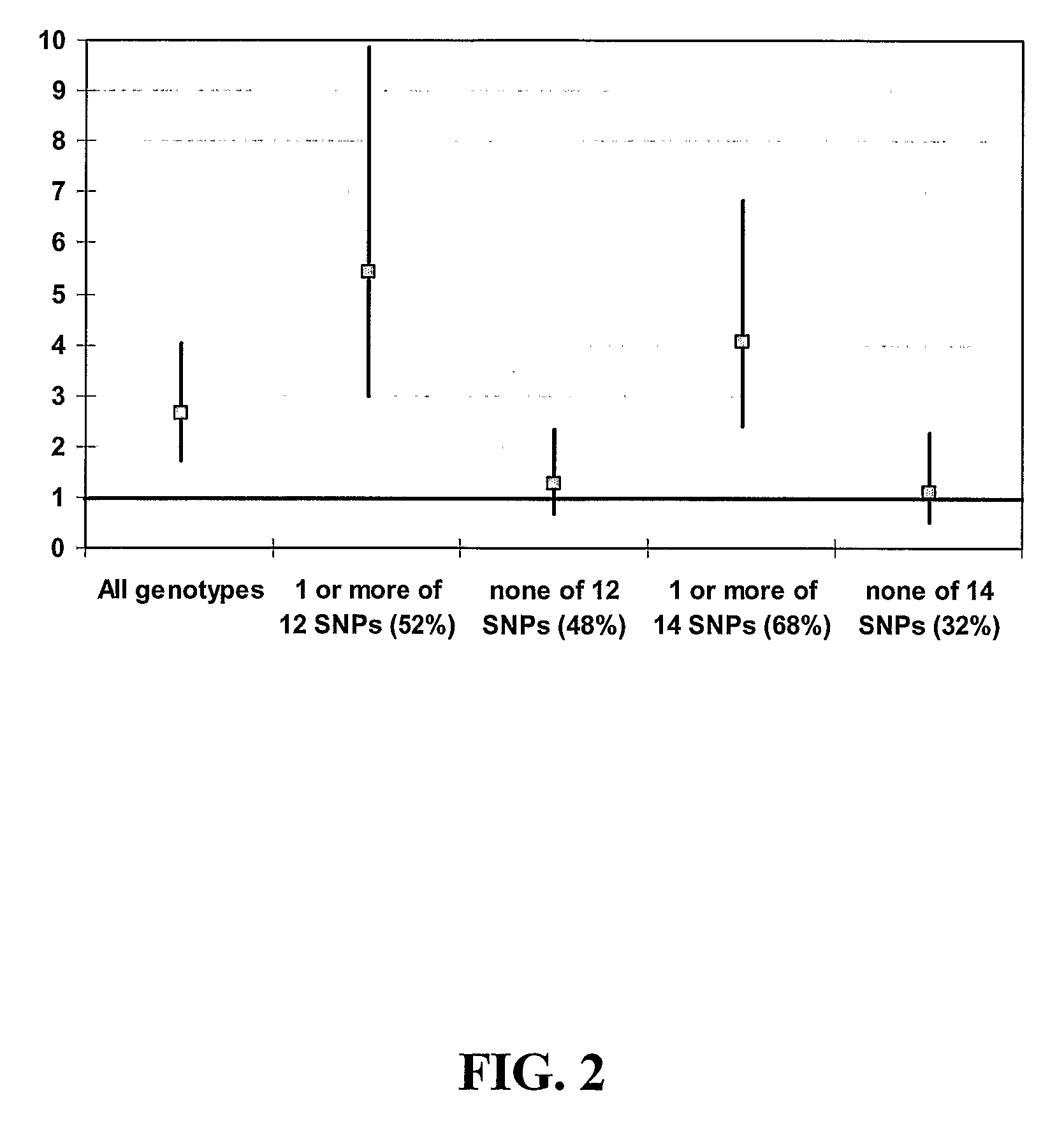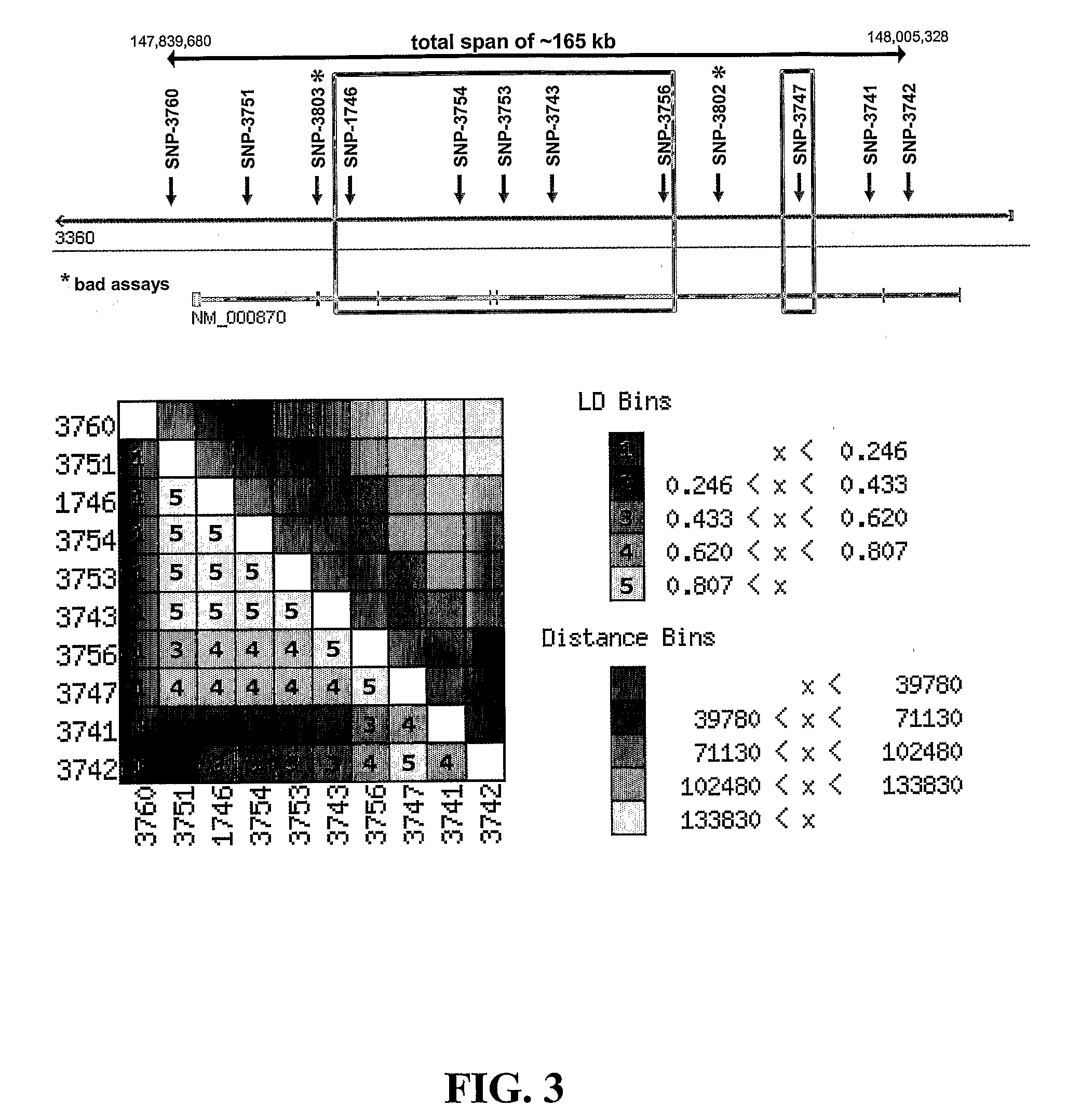Biomarkers for Identifying Efficacy of Tegaserod in Patients with Chronic Constipation
- Summary
- Abstract
- Description
- Claims
- Application Information
AI Technical Summary
Benefits of technology
Problems solved by technology
Method used
Image
Examples
example i
Pharmacogenetic Analysis of Response to Tegaserod Patients with Chronic Constipation
[0132]Introduction. A clinical trial was performed to evaluate the efficacy of tegaserod (Zelmac® / Zelnorm™) at 6 mg bid (12 mg / day) or 2 mg bid (4 mg / day) vs. placebo by measuring the number of complete spontaneous bowel movements (CSBM) during the first 4 weeks of treatment. Secondary objectives included evaluating the number of CSBM during the entire 12-week treatment period, bowel habits, laxative use, and safety and tolerability issues. The clinical trial design consisted of a 2-week baseline period without medication, a 12-week, randomized, double-blind, placebo-controlled treatment period, and a 4-week withdrawal period without study medication. As part of the clinical trial, DNA was collected from patients at screening for pharmacogenetic analysis to evaluate genetic polymorphisms relating to drug targets and disease aetiology.
[0133]Two major classes of insertion / deletion polymorphisms have be...
PUM
| Property | Measurement | Unit |
|---|---|---|
| Mass | aaaaa | aaaaa |
| Mass | aaaaa | aaaaa |
| Mass | aaaaa | aaaaa |
Abstract
Description
Claims
Application Information
 Login to View More
Login to View More - R&D
- Intellectual Property
- Life Sciences
- Materials
- Tech Scout
- Unparalleled Data Quality
- Higher Quality Content
- 60% Fewer Hallucinations
Browse by: Latest US Patents, China's latest patents, Technical Efficacy Thesaurus, Application Domain, Technology Topic, Popular Technical Reports.
© 2025 PatSnap. All rights reserved.Legal|Privacy policy|Modern Slavery Act Transparency Statement|Sitemap|About US| Contact US: help@patsnap.com



